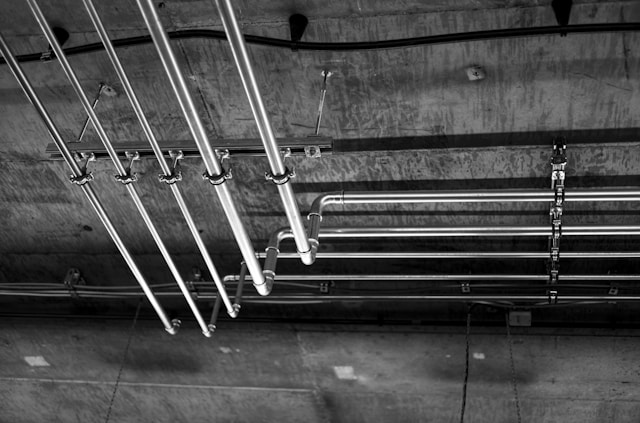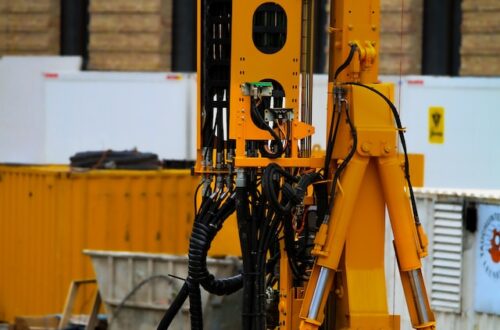
The Essential Guide to Smoke Testing in Plumbing: Techniques and Benefits
Vigilance is critical in plumbing to ensure everything flows as it should. Plumbing is a crucial component that goes unnoticed until a leak or obstruction necessitates immediate attention. It is hidden beneath floors and behind walls. Within this unseen network, smoke testing plumbing systems have emerged as a clear solution for maintaining system integrity without resorting to invasive measures. This guide sheds light on the smoke-testing process, its importance, and its undeniable benefits in residential and commercial maintenance strategies.
Key Takeaways:
- Smoke testing is an essential, non-invasive diagnostic method for detecting faults in plumbing systems.
- Consistent application of smoke testing can prevent severe damage and maintain system efficiency.
- Knowing how to interpret a smoke test’s results allows quick and appropriate actions.
Table of Contents:
- What Is Smoke Testing?
- Why Smoke Testing Is Critical for Maintaining Plumbing Systems
- How Smoke Testing Works: A Step-by-Step Process
- The Benefits of Regular Smoke Testing
- Common Scenarios Where Smoke Testing Is Utilized
- Best Practices for Effective Smoke Testing
- Understanding the Results: Interpreting Smoke Test Findings
- The Environmental Impact of Smoke Testing
- Addressing Common Misconceptions About Smoke Testing
What Is Smoke Testing?
At its core, smoke testing is a straightforward yet ingenious procedure. By introducing non-toxic smoke into a sealed plumbing system, professionals can visually track the smoke’s escape to spot leaks and defects quickly. The technique has evolved significantly, becoming a critical tool in the diagnostic arsenal for modern plumbing professions. These advancements have refined smoke testing, making it a reliable and efficient means to assess and assure the health of plumbing infrastructures.
Why Smoke Testing Is Critical for Maintaining Plumbing Systems
Proactive measures are always preferable to reactive ones, especially regarding plumbing. Smoke testing exemplifies this approach. By flagging up potential complications before they escalate into full-blown emergencies, routine smoke testing becomes an indispensable preventative strategy. It is the ounce of prevention worth pounds of cure, circumventing the potential fallout from a neglected system—such as extensive water damage, soaring utility bills from hidden leaks, or the health hazards of sewer gas infiltrations.
How Smoke Testing Works: A Step-by-Step Process
Smoke testing is meticulous and must be conducted with attention to detail. It begins with assessing the system to identify the most effective entry point for smoke. Once the system is adequately pressurized with smoke, professionals observe and record the emanation points where smoke signals a defect or leak. This systematic approach, while simple in theory, demands a high degree of technical knowledge and experience from practitioners to ensure the accuracy of the test results and the safety of the process.
The Benefits of Regular Smoke Testing
A regimen of regular smoke testing reaps substantial rewards. Not only does it contribute to prolonged infrastructure lifespan, but it also enhances system performance and efficiency. Early detection and correction of leaks mean less water and energy waste, translating into cost savings for property owners. In addition, smoke testing’s ability to pinpoint breaks and weak spots supports proactive maintenance, minimizing the likelihood of future malfunctions and the need for emergency repairs.
Common Scenarios Where Smoke Testing Is Utilized
Smoke testing serves multiple scenarios across the spectrum of property management. Residential communities benefit greatly, as the technique helps homeowners isolate the source of sewer odors or pinpoint where unwanted pests may enter. Commercial establishments rely on smoke testing to ensure compliance with health regulations and to safeguard their premises from potential liabilities associated with unchecked leaks. For municipalities, it’s a valuable tool for maintaining public sewer systems, helping to avert public health concerns before they arise.
Best Practices for Effective Smoke Testing
Adherence to best practices is critical for smoke testing to yield the most accurate results. These include meticulous planning, carefully selecting appropriate smoke-generating substances, and proper communication with all stakeholders affected by the testing process. Professionals are expected to abide by these practices faithfully, aligning their actions with stringent standards to deliver reliable outcomes and ensure the well-being of residents and the property during the testing.
Understanding the Results: Interpreting Smoke Test Findings
Interpreting the results from smoke testing requires a discerning eye. Professionals must analyze where and how the smoke emerges, using these indicators to map out a course of action for repairs or further diagnostics. Trained technicians can recognize the subtleties in smoke patterns, translating these signs into actionable intelligence. This expertise is vital in providing timely and cost-effective solutions to the issues uncovered during the test.
The Environmental Impact of Smoke Testing
Today’s environmental consciousness necessitates that even maintenance techniques be scrutinized for their ecological impact. Fortunately, the evolution of smoke testing practices has incorporated this awareness, leading to adopting environmentally safe smoke and testing methods. This consideration ensures that while the integrity of plumbing systems is maintained, the surrounding environment remains unharmed, preserving air quality and preventing any adverse effects on local wildlife and ecosystems.
Addressing Common Misconceptions About Smoke Testing
Misinformation can often cloud the reputation of smoke testing, with common myths implying the method is hazardous, excessively disruptive, or even inaccurately identifying problems. Dispelling these fallacies is crucial to fostering a more informed perception among property owners and the general public. With transparent information and transparency, the actual value of smoke testing is recognized, establishing it as a pivotal component in routine plumbing maintenance.
In conclusion, the method of smoke testing plumbing systems represents a significant advancement in plumbing maintenance. Its efficacy in detecting leaks and blockages before they become severe makes it essential to any comprehensive property care plan. By embracing smoke testing as part of broader infrastructure and water quality monitoring efforts, property owners can achieve a greater degree of assurance regarding the health and efficiency of their systems. Additionally, the continued innovation and improvement of methods in smoke testing ensure that this technique remains at the forefront of preventive maintenance practices, safeguarding both the property and the environment.





